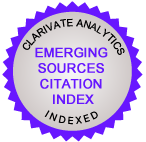Cristina Fernández de Kirchner‘s communication strategy in the speeches at her swearing-in ceremonies
-
Idoia Camacho Markina
 idoia.camacho@ehu.eus
idoia.camacho@ehu.eus
-
María Teresa Santos Diez
 mariateresa.santos@ehu.eus
mariateresa.santos@ehu.eus
Downloads
DOI:
https://doi.org/10.4067/S0718-48672020000200187Abstract
This article aims to investigate Cristina Fernández de Kirchner‘s communication strategy when she was President of the Republic of Argentina (2007-2015) by analyzing the two speeches given during both swearing-in ceremonies. We identified the populist characteristics that are present in these speeches, according to the concepts proposed by Patrick Charaudeau (catastrophic description, denouncing of culpable parts, exaltation of values, and the emergence of the rescuer of society), to evaluate the image that the president wants to transmit of herself and the receiving public. To do this, we used the method of quantitative and qualitative content analysis. We applied the framing theory, according to which political leaders selectively construct reality, emphasizing and omitting crucial aspects in their public interventions. The conclusions show that the president presents herself as the savior of society, mentions herself on numerous occasions and always in a positive way, mentions the receiving public less frequently than herself, and does so through mainly passive qualities.
Palabras Clave
AIRA, T. (2009): Los Spin Doctors. Cómo mueven los hilos los asesores de los líderes políticos. Barcelona: Editorial UOC.
AMADO, A. (2015): Calidad periodística y fuentes presidenciales: el periodismo argentino frente a la comunicación de gobierno. Estudios sobre el Mensaje Periodístico, v. 21, pp. 63-84. DOI: http://dx.doi.org/10.5209/rev_ESMP.2015.v21.50656
ARROYAS, E. y PÉREZ, P. L. (2016): La nueva narrativa identitaria del populismo: un análisis del discurso de Pablo Iglesias (Podemos) en Twitter. Cultura, lenguaje y representación, v. 15, pp. 51-63. DOI: http://dx.doi.org/10.6035/clr.2016.15.4
ARROYO, L. (2012): El poder político en escena. Historia, estrategias y liturgias de la comunicación política. Barcelona: RBA Libros.
BÁEZ, J. (2007): Investigación cualitativa. Pozuelo de Alarcón: ESIC.
BARDIN, L. (2002): Análisis de contenido. Madrid: Akal.
BERMÚDEZ, N. (2014): Las emociones en el discurso político. ‘Pathograma‘ del kirchnerismo. Acta poética, 35 (1), pp. 11-43.
BIGLIERI, P. y PERELLÓ, G. (Eds.) (2007): En el Nombre del Pueblo: la emergencia del populismo kirchnerista. Buenos Aires: UNSAM Edita.
BRITTO, L. (2011): La máscara del poder. Del gendarme necesario al demócrata necesario. Caracas: Correo del Orinoco.
CANEL, M. J. (2006): Comunicación Política. Un guía para su estudio y práctica. Madrid: Tecnos.
CAPDEVILA, A. (2004): El discurso persuasivo: la estructura retórica de los espots electorales en televisión. Bellaterra: Universitat Autónoma de Barcelona.
CASERO, A. (2009): El control político de la información periodística. Revista Latina de Comunicación Social, no. 64. Disponible en:
http://www.revistalatinacs.org/09/art/29_828_47_ULEPICC_08/Andreu_Casero.html
CASTELLS, M. (2009): Comunicación y poder. Madrid: Alianza Editorial.
CHARAUDEAU, P. (2009a): La argumentación persuasiva. El ejemplo del discurso político. En SHIRO, M., BENTIVOGLIO, P., ERLICH, FRANCES D. DE y BOLIÌVAR, A.: Haciendo discurso. Homenaje a Adriana Bolívar. Caracas: Universidad Central de Venezuela, pp. 277-304. Disponible en: http://www.patrick-charaudeau.com/La-argumentacion-persuasiva-El.html
____ (2009b): Reflexiones para el análisis del discurso populista. Discurso & Sociedad, 3 (2), pp. 253-279. Disponible en:
http://www.dissoc.org/ediciones/v03n02/DS3%282%29Charaudeau.pdf
DIEGO, J. (2014): ¿Discurso político o politicidad de los discursos? Una propuesta para pensar la relación entre kirchnerismo y prensa. En GINDIN, I. L. (Coord.): Kirchnerismo, mediatización e identidades políticas: reflexiones en torno a la política, el periodismo y el discurso (2003-2008), pp. 12-31. Rosario: UNR Editora.
DIJK, T. A. (1999): Ideología. Una aproximación interdisciplinaria. Barcelona: Gedisa.
____ (2003): Ideología y discurso. Barcelona: Ariel.
____ (2005): Política, ideología y discurso. Quórum Académico, 2 (2), pp. 15-47.
DUSSEL, E. (2007): Cinco tesis sobre “el populismo”. México: UAM-Iztapalapa.
ELÓRTEGUI, C. D. (2009): Populismos latinoamericanos y comunicación. Una nueva mirada a las interacciones de la política popular desde el caso chileno. Tesis doctoral. España, Universidad Autónoma de Barcelona. Disponible en: www.tdx.cat/bitstream/10803/4213/1/ceg1de1.pdf
ENTMAN, R. (1993): Framing: Towards a Clarification of a Fractured Paradigm. Journal of Communication, 43 (4), pp. 51-58. DOI: http://dx.doi.org/10.1111/j.1460-2466.1993.tb01304.x
____ (2003): Cascading Activation: Contesting the White House‘s Frame After 9/11. Political Communication, 20 (4), 415-432. DOI: 10.1080/10584600390244176
____ (2004): Projections of Power: Framing News, Public Opinion, and U.S. Foreign Policy. Chicago: University of Chicago Press.
____ (2007): Framing Bias: Media in the Distribution of Power. Journal of Communication, 57 (1), pp. 163-173. DOI: 10.1111/j.1460-2466.2006.00336.x
FERNÁNDEZ, M. (2014): Periodismo y política en la Argentina kirchnerista: disputas por la intermediación en el espacio público. Un análisis desde la perspectiva de la mediatización. En GINDIN, I. L. (Coord.): Kirchnerismo, mediatización e identidades políticas: reflexiones en torno a la política, el periodismo y el discurso (2003-2008), pp. 12-31. Rosario: UNR Editora.
GASPAR, A. e IBEAS, N. (2015): El discurso institucional en tiempos de crisis: análisis del Mensaje de Navidad de Su Majestad el Rey. ZER. Revista de Estudios de Comunicación, 20 (38), pp. 31-48.
GINDIN, I. L. (2016): Los avatares del pasado en el discurso de Cristina Fernández: Peronismo y Bicentenario. Opción, 31 (79), pp. 86-107.
DOI: http://dx.doi.org/10.5209/rev_ESMP.2015.v21.50656
LACLAU, E. (1978): Política e ideología en la teoría marxista. Capitalismo, fascismo, populismo. Madrid: Siglo XXI.
____ (2005): La razón populista. Buenos Aires: S. L. Fondo de Cultura Económica de España.
____ (2006): La deriva populista y la centroizquierda latinoamericana. Nueva Sociedad, no. 205, pp. 56-61.
LEITH, S. (2012): ¿Me hablas a mí? La retórica de Aristóteles a Obama. Madrid: Taurus.
LODOLA, G. y KITZBERGER, P. (2017): Politización y confianza en los medios de comunicación: Argentina durante el kirchnerismo. Revista de Ciencia Política, 37 (3), pp. 635-658.
LÓPEZ, A. y SANTIAGO, J. (2000): Retórica y comunicación política. Madrid: Cátedra.
MAZZOLENI, G. (2010): La comunicación política. Barcelona: Alianza Editorial.
MONTERO, A. S. (2009): Puesta en escena, destinación y contradestinación en el discurso kirchnerista (Argentina, 2003-2007). Discurso & Sociedad, 3 (2), pp. 316-347.
NOVARO, M. (2006): Izquierda y populismo en la política argentina. En PÉREZ-HERRERO, P.: La izquierda en América Latina. Madrid: Instituto Universitario Ortega y Gasset y Fundación Pablo Iglesias, pp. 115-190. Disponible en: http://historiapolitica.com/datos/biblioteca/novaro2.pdf
O‘DONNELL, M. (2008): El atril del asesino. En RINCÓN, O.: Los tele-presidentes: cerca del pueblo, lejos de la democracia. Crónicas de 12 presidentes latinoamericanos y sus modos de comunicar. Bogotá: Centro de Competencia en Comunicación para América Latina Friedrich Ebert Stiftung, pp. 39-45.
RETAMOZO, M. (2014): Populismo en América Latina: desde la teoría hacia el análisis político. Discurso, sujeto e inclusión en el caso argentino. Colombia Internacional, no. 82, pp. 221-258. DOI: 10.7440/colombiaint82.2014.09
REY, J. (1996): ¿De qué hablamos cuando hablamos de comunicación política? ZER. Revista de Estudios de Comunicación, no. 1, pp. 51-66.
____ (2011): La comunicación política en la sociedad del marketing y de internet. Encuadres, relatos y juegos de lenguaje. Revista de Comunicación, no. 10, pp. 102-128.
RINCÓN, O. (2008): ¿La comunicación no tiene ideología? En RINCÓN, O.: Los tele-presidentes: cerca del pueblo, lejos de la democracia. Crónicas de 12 presidentes latinoamericanos y sus modos de comunicar. Bogotá: Centro de Competencia en Comunicación para América Latina Friedrich Ebert Stiftung, pp. 5-13.
ROJAS, C., MUJICA, S. y SUCKEL, Á. (2009): Neopopulismo y el papel de los medios de comunicación en los gobiernos de Carlos Menem y Alberto Fujimori. Revista Pléyade, no. 3, pp. 135-157.
SÁDABA, T., RODRÍGUEZ, J. y BARTOLOMÉ, M. (2012): Propuesta de sistematización de la teoría del framing para el estudio y praxis de la comunicación política. Observatorio (OBS*), 6 (2), pp. 109-126.
SALAS-PORRAS, A. (2002): Comunicación política, neopopulismo y democracia. Estudios Políticos, no. 30, pp. 91-122.
DOI: http://dx.doi.org/10.22201/fcpys.24484903e.2002.30.37543
VINCENT, L. (2011): La disputa por la mediación durante el kirchnerismo en Argentina. CONfines de relaciones internacionales y ciencia política, 7 (13), pp. 49-81.
VITALE, M. A. y MAIZELS, A. L. (2011): El discurso electoral de Cristina Fernández de Kirchner (2007). Un caso de ethos híbrido no convergente. Linguagem em (Dis)curso, 11 (2), pp. 337-360. DOI: http://dx.doi.org/10.1590/S1518-76322011000200007
WOLTON, D. (1998): La comunicación política: construcción de un modelo. En FERRY, J. M. y WOLTON, D.: El nuevo espacio público. Barcelona: Gedisa, pp. 28-46.
YANES, R. (2006): Límites éticos del mensaje persuasivo en la comunicación política. ZER. Revista de Estudios de Comunicación, 11 (20), pp. 57-69.
Most read articles by the same author(s)
- Idoia Camacho Markina, María Teresa Santos DIez, The cannabis revolution. Presence in the Spanish press. , Perspectivas de la Comunicación: Vol. 16 No. 1 (2023): January - June
Similar Articles
- Alfredo Arceo Vacas, Rafael Barberá González, Sergio Álvarez Sánchez, The context of perception generated on Twitter for the Spanish electoral debates of December 2015 and June 2016: treatment of the credibility factors by the candidates , Perspectivas de la Comunicación: Vol. 13 No. 2 (2020): July-December
- José Luis Torres-Martín, Andrea Castro-Martínez, Pablo Díaz-Morilla, Cristina Pérez Ordóñez, Women executives and creators in the audiovisual sector. Analysis of Spanish fiction series in the catalogs of Amazon Prime Video, Movistar+, and Netflix (2019-2021) , Perspectivas de la Comunicación: Vol. 15 No. 2 (2022): July - December
- Carlos Muñiz, Mexican contribution to the study of political communication. Bibliometric analysis of papers in open access journals , Perspectivas de la Comunicación: Vol. 17 (2024): January - December
- Teresa Velázquez García-Talavera, Marta Rizo García, The discourse of the far right and the crucial moments of political life , Perspectivas de la Comunicación: Vol. 18 (2025): (Publishing on a rolling basis)
- Javier Abuín-Penas, Claudia Montero Liberona, How does the Chilean Ministry of Health communicate about cancer? Analysis of Facebook and Instagram posts from 2018 to 2023 , Perspectivas de la Comunicación: Vol. 16 No. 2 (2023): July - December
- Alfonso Chaves-Montero, Walter Federico Gadea-Aiello, José Ignacio Aguaded-Gómez, The political communication on social networks during the 2015 electoral campaign in Spain: usage, effectivity and reach , Perspectivas de la Comunicación: Vol. 10 No. 1 (2017): Enero - Agosto
- Eugenia Blasetti, Emma Garzonio, The social representation of migrants during the COVID-19 pandemic. An Italian case study on hostile narratives and visual political communication , Perspectivas de la Comunicación: Vol. 15 No. 2 (2022): July - December
- Alejandro Grimson, Marta Rizo García, The affective-emotional dimension in communication theories: gaps and possibilities , Perspectivas de la Comunicación: Vol. 18 (2025): (Publishing on a rolling basis)
- Elena Francés Tecles, Ramón Camaño Puig, Internal communication in primary health centers: A nursing perspective , Perspectivas de la Comunicación: Vol. 16 No. 2 (2023): July - December
- Miguel Valderrama, Mauro Salazar, Hegemonies of knowledge. Records of Ernesto Laclau under the Chilean post-dictatorship (Santiago, 1997-2007). , Perspectivas de la Comunicación: Vol. 17 (2024): January - December
1 2 3 4 5 6 7 8 9 10 11 12 > >>
You may also start an advanced similarity search for this article.
Downloads
Published
How to Cite
Issue
Section
License
Copyright (c) 2020 Perspectivas de la Comunicación - ISSN 0718-4867

This work is licensed under a Creative Commons Attribution 4.0 International License.
- Proposed policy to offer Open Access Journals
Authors who publish with this journal agree to the following terms:
a) Authors retain copyright and grant the journal right of first publication with the work simultaneously licensed under a Creative Commons Attribution Attribution (CC -BY 4.0) ![]() that allows others to share the work with an acknowledgement of the work's authorship and initial publication in this journal.
that allows others to share the work with an acknowledgement of the work's authorship and initial publication in this journal.
b) Authors are able to adopt licensing agreements for the non-exclusive distribution of the journal's published version of the work (for example, to post it to an institutional repositories or publish it in a monograph), with an acknowledgement of its initial publication in this journal.
c) Authors are allowed and encouraged to post their work online (For example, in institutional repositories or on their website) prior to and during the submission process, as it can lead to productive exchanges and increase the citation of published work (See The Effect of Open Access).











